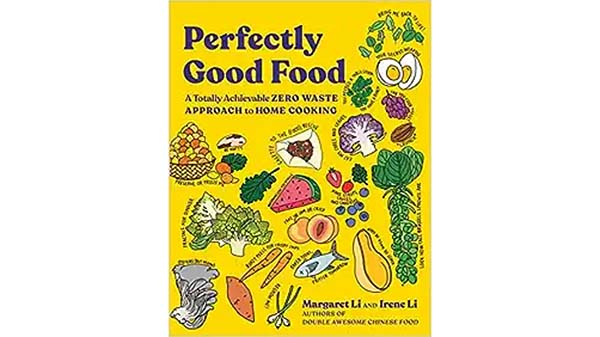Everyone hates food waste, but nobody does anything about it.
That’s not completely fair. The culinary sister team of Margaret and Irene Li has come out with a book entitled Perfectly Good Food: A Totally Achievable Zero Waste Approach to Home Cooking.
This chatty, accessible, and informative book gives dozens of recipes and suggestions for dealing with food that you may be about to throw out—and suggestions about how to tell whether you should. Milk: the smell test works perfectly well. And “sour pasteurized milk can be consumed safely!”
By far the largest part of the book focuses on fresh vegetables and fruits, with suggestions like this one: “In our opinion, people tend to discard lots of perfectly good asparagus ends by snapping them off where they bend. Give those ends a feel—if they’re just a little tougher than the rest of the stalk, slice them crosswise into thin coins and give them a bit of extra cooking time. If the very ends are really dry or woody, toss them into your Kitchen Scrap Stock Bag . . . so they don’t go to waste.”
These recommendations exemplify the Lis’ approach: you can eat stems and ends; just give them more cooking time. If that’s not going to work, set them aside and use them to make stock. (I’m reminded of the Potato Peel Broth in Anna Thomas’s classic Vegetarian Epicure.)
The Lis’ book starts out with a collection of “Hero Recipes”: highly adaptable recipes in which you can include all sorts of stray ingredients. One striking example: paella. I had always thought of Spain’s national dish as a rigid recipe requiring chicken, sausage, and seafood, but apparently I was wrong: Citing Alberto Herraiz’s Paella, the authors say, “There’s no such thing as an ‘authentic’ paella, because it’s not a recipe, but rather ‘a method of cooking linked to a particular utensil: the pan.’ . . . Once you’ve got the basic ingredients—tomatoes or sofrito, short-grain rice, and some good stock—you can improvise as you see fit.” Sofrito: “the aromatic base for a number of Spanish, Caribbean, and Latin American dishes.” It consists of onions and tomatoes fried to a thick consistency.
Experienced cooks no doubt will already know some of the Lis’ secrets. On the other hand, I suspect that even experienced cooks will learn new things here. I didn’t know that you could cook cucumbers, but apparently if you do, they approximate zucchini. (Good news, because our garden has produced a lot of them this year.)
If the book has a defect, it is that it gives comparatively short shrift to proteins such as meat and dairy. But that’s possibly because they’re less in need of rescue. Do you really need a cookbook to find something to do with last night’s leftover ribeye?
Anyone who likes to cook will, I think, find the Lis’ book both useful and delightful. And if I were writing promotional recipes for some specific produce item, I would definitely look through this book to freshen my thinking.



